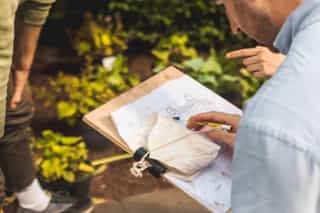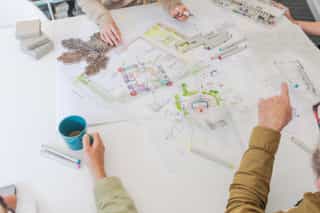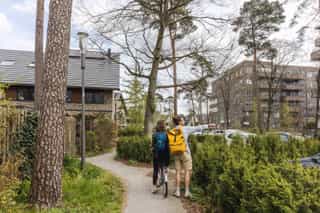Regenerative Practice
It's a simple ambition, but a complex challenge to untangle.
We have a Regenerative Design Tool that provides us with a framework to manage that complexity, and take on that challenge.
In developing the tool, we have drawn inspiration and insight from the brilliant work of others who have blazed the trail before us, and those who are pioneering alongside us. We’re in deep gratitude to this open and collaborative ethos and culture – the regenerative movement doesn’t believe in copyrights, only in the right to copy. We’re all on the same urgent mission and we’ll get there faster, together.
It is based on the pioneering work of Kate Raworth, an English economist known for "Doughnut Economics", a 21st-century economic vision of meeting the needs of all people within the means of the living planet, through regenerative and distributive design. It translates the core principles of doughnut economics into key considerations for development, and is tailored to the specific challenges of Planit's disciplines.

We’re an urban and rural design practice, working to benefit people, places, and the world at large. We practice Landscape Architecture, Urban Design, and Visual Storytelling, and undertake Creative Engagement and Impact Assessment across projects of all sizes for all sectors.
Our work stretches from strategy to concept, design through to delivery, and long-term stewardship. We shape places for the common good, creating ideas that bring people together in unexpected ways, and places for a world still here when we’re not. We are not stopping at sustainable, or just simply at having a positive impact - our approach is towards regenerative practice.




We’re on a learning journey, and approach ‘Regenerative’ not as a destination, but as a practice. It’s something we work at day after day, iteratively improving.
We are constantly horizon scanning, and sourcing new ideas from across the built environment industry and beyond.
The pace of change in the industry is fast as we seek answers to the urgent challenges of our time. We acknowledge the distance the industry has to travel, the innovation challenges it needs to overcome, and the culture shift necessary to move beyond sustainability. It’s no small task.
Our near-term mission is to ensure that each project we deliver has a clear and measurable net-positive impact for all living things. The tool empowers us to understand project impacts across a complete spectrum of sustainability indicators.
The tool is an evolving resource, improving through continuous research and development as we learn how to build regeneratively, and find new and better ways of measuring, monitoring, and communicating our impact.

We need to transform the built environment industry from being degenerative by default, to being regenerative by design. As designers we imagine better futures, give them form, and bring them into the world.
The tool is a powerful framework for whole-systems thinking, but the real value / intelligence is in its skilled application. Our regenerative approach is powered by the wisdom and experience of our employees. Planit has nurtured the unique design expertise that resides within our teams, honed through collaborative interdisciplinary working and a learning culture.
Our Objectives
Our Regenerative Design Tool takes two fundamental imperatives of doughnut economics - respecting planetary boundaries, and supporting the social foundation - and builds upon these with four ecological design objectives. These are...
The Tool is intended as a way for designers to consider a place and a project from a whole-systems perspective, and maximise regenerative impact across a complete spectrum of sustainability dimensions.
Supporting our four objectives are sixteen core pillars of regenerative design. These are the impact categories we need to focus on if we want to design for all life to thrive in balance.
The Regenerative Design Tool is intended to be used across the design stages, and track project evolution by following a series of steps to produce a 'dashboard' of ambitious sustainability objectives for a project. These steps are…

Standing up to the urgent challenges of today requires deep innovation in the way we create the places of tomorrow.
Let’s get to work.
We hope to inspire others on this learning journey towards a regenerative future. Collaboration is a keystone to regenerative practice, and we welcome inquiries and invitations to work together with open arms.
Get in touch


